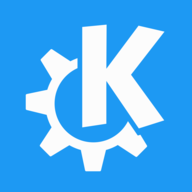- 11 Posts
- 109 Comments

 21·12 days ago
21·12 days agoHe uses a version of Emacs called MicroEmacs.
I recall seeing his MicroEmacs configuration a while back when I was exploring options to start using Emacs.

 8·1 month ago
8·1 month agoSomething does seem fishy: the total number of votes this post has received (~450 at the time of writing this comment) is only about a third of the number of comments (~1.2k).
I guess people were really pent up about their pedantic tendencies.

 2·2 months ago
2·2 months agoThanks for sharing your experience.
Also, appreciate the intro to Haiku OS, I had not heard of it earlier. It is interesting to read their philosophy through their FAQs.

 1·2 months ago
1·2 months agoThank you. The order of trials is 98 -> 2000 -> XP.
I will not be using Windows to connect to the internet; that function will be reserved for the Linux based OS, which I will be running in dual boot mode.
During my search for operating systems for older machines, I did come across NetBSD, but I am not sure if I am ready to give up my familiarity with Linux-based OSs.
Edit: Having said that, this seems like a good opportunity to try it out.

 13·2 months ago
13·2 months agoI am surprised that 0 A.D. is not mentioned.
Although initially unplayable, the game was fun in the mid-to-late 2000s.
I haven’t checked it out in a while, but it holds high nostalgic value for me.
Refurbished ThinkPads are available in countries where Framework, System76, and Pine64 do not ship.
Besides, ThinkPads are really well-built machines that perform well for everyday tasks at a fraction of their (or the aforementioned competition’s) original price.
I love my two machines, which are from before Lenovo took over completely. Their keyboards, port selection, and repairability are almost unparalleled compared to today’s competition.

 3·2 months ago
3·2 months agoThank you. I shall add SeaMonkey to the list of browsers to try out.

 1·2 months ago
1·2 months agoThank you for your insight. But I have made it clear that I will not be using Windows 98 for browsing the web, and instead use a Linux based OS.

 2·2 months ago
2·2 months agoX220 is a beautiful machine! May it continue to serve you well for years to come. :-)

 3·2 months ago
3·2 months agoYes. I do plan to max out the CPU and RAM, and use an SSD.
Thank you for pointing to the software. I am already looking into getting back on IRC thanks to another comment. I will check the rest out.

 2·2 months ago
2·2 months agoIt has been more than a decade since I used IRC, #oldcomputerchallenge is a very good reason to get back to using it.
I was superficially aware of Gopher, but I did not know of the other internet protocols mentioned at: https://portal.mozz.us
Also, I completely agree with your point about using light software. I hope I come across more such software as I go down this rabbit hole.
I have learnt so much from your few comments. Thank you so much!
P.S. I am curious to know what your daily driver is, only if you don’t mind sharing.

 6·2 months ago
6·2 months agoYes. I plan on using a lightweight Linux based OS for daily operations and restrict Windows only to game. I also know Firefox would not cut it, and using an older build of FF is a security risk.
The intention behind making this post was to learn from the community what they do to browse the web on vintage machines, if they even do.
Thank you for pointing me to Luakit and https://farside.link. I already use alternative front ends like Piped and Nitter but it is nice to see there are many more options.

 5·2 months ago
5·2 months agoThank you. I do have my expectations in check. That is the reason the machine is restricted to certain activities like reading and writing/journaling.
I was just curious if anyone is using it to browse the web, especially with a combination of lightweight OS and browser.

 3·2 months ago
3·2 months agoThank you sharing about The Old Net. They even have a lite page for systems with limited RAM:

 2·2 months ago
2·2 months agoOh I won’t even bother connecting to the web with Windows 98.
When I asked the question I assumed a Linux based OS like Antix or Bunsen.

 3·4 months ago
3·4 months agoPardon me if I sounded dismissive. 1Blocker is good, and so is AdGuard.
I remember those being one of the first ones to do the job well, back when Apple launched content blockers. Wipr came much later, and I only recently switched to it (around late 2022).

 3·4 months ago
3·4 months agoJoplin’s storage model made me stop using it.
Managing plain text notes should not be this convoluted.

 1·4 months ago
1·4 months ago- Windows 95, 98, 2000, XP, 7 spanning a decade and a half.
- Ubuntu 10.04 going up to the release where Unity became the default DE (11.04, I think). Came back to 10.04, as it was an LTS release.
- Linux Mint Maya because of Cinnamon, and it was terrible.
- Fedora 16 to 25 or 26.
- Linux Mint 19
Been with Linux Mint ever since. It just works. LM19 was also around the time when I stepped into Apple’s walled garden with iOS and macOS.







I have experienced this myself.
My main machine at home - a M2 Pro MacBook with 32GB RAM - effortlessly runs whatever I throw at it. It completes heavy tasks in reasonable time such as Xcode builds and running local LLMs.
Work issued machine - an Intel MacBook Pro with 16GB RAM - struggles with Firefox and Slack. However, development takes place on a remote server via terminal, so I do not notice anything beyond the input latency.
A secondary machine at home - an HP 15 laptop from 2013 with an A8 APU and 8GB RAM (4GB OOTB) - feels sluggish at times with Linux Mint, but suffices for the occasional task of checking emails and web browsing by family.
A journaling and writing machine - a ThinkPad T43 from 2005 maxed out with 2GB RAM and Pentium M - runs Emacs snappily on FreeBSD.
There are a few older machines with acceptable usability that don’t get taken out much, except for the infrequent bout of vintage gaming